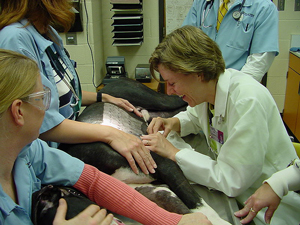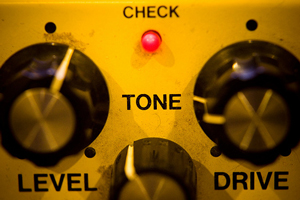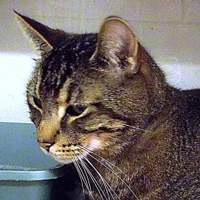
Source: Shulman Kirill, 1984, Wikimedia
Don't be bugged by fleas and ticks. Get your dog or cat treated today.
Your pet depends on you to keep it safe and comfortable. Get your dog or cat immunized today.
Pet owners have an implicit obligation to maintain their pets' health and well-being. Update your dog's or cat's immunizations today.

Source: Picture 468, self, Wikimedia
Which of these advertising pitches would you respond to most positively?
It depends on what sort of veterinary care you like.
If you prefer a veterinarian with a no-nonsense approach, you will probably respond to the pitch from Responsible Care Veterinary Hospital.
If you prefer a veterinarian who could be your best friend reminding you of your responsibility as a pet owner, you would probably respond to the ad for the Small Animal Hospital.
If you prefer a veterinarian who will call your pet by its name and scratch it behind the ears before giving it a shot, you might respond best to the Perky Pet ad.
Each of these advertisements has a different tone. The Perky Pet ad has an informal tone with a little humor. The Small Animal Veterinary ad has a semiformal tone. It doesn't treat immunizations as a joking matter, but it makes this veterinary hospital sound like a friendly place to take a pet. The Responsible Care Veterinary Hospital for Serious Pet Owners presents itself as a formal establishment by taking a formal tone in the advertisement.

Source: Tone, Jacob Joaquin, Flickr
Which tone is correct?
All of them are. The tone gives readers of the advertisements an impression about the attitude of the veterinarians. As long as the veterinarians are aware of what tone they are taking and the impression it is likely to give, each of these different tones is effective.
How can tone go wrong, then, if all these different levels of tone are acceptable?
Tone goes wrong (and requires you as an author to revise) when it is distractingly inappropriate.
This can mean that there is some jarringly formal diction or formal figures of speech in an informal text, or more frequently, that there is some jarringly informal diction or informal figures of speech in a formal (or academic) text.
Can you spot the inappropriately formal sentence in the advertising text below?

Source: Pet of the Week: Tiger, #1049684, Human Society of Greater . . ., Flickr

Source: Pet of the Week: Fred Jackson, #18777453, Human e Society of greater . . ., Flickr
Don’t be bugged by fleas and ticks. Keep Fido or Kitty feeling happy. Fulfill your obligation to maintain your pet’s health and well-being.
The third sentence is more formal than the first two sentences. Maybe you didn't feel that the formality of the third sentence in the advertisement above was completely inappropriate. Usually, some formality that finds its way into informal writing can be more acceptable than the other way around.
Look at the passage below. See if you can tell what is inappropriately informal.
Pet owners have an implicit obligation to maintain their pets’ health and not let the pets be bugged by fleas and ticks. You have chosen to accept responsibility for your pet; you need to give the pet the best care possible.
You're right: The word “bugged” in the first sentence is informal.
In this lesson, you are going to learn about and practice a strategy for checking the tone of your diction and your figures of speech. First of all, you will systematically think about your writing by identifying the diction and figures of speech that indicate tone. Then, you will evaluate the appropriateness of the tone that the diction and the figures of speech indicate.